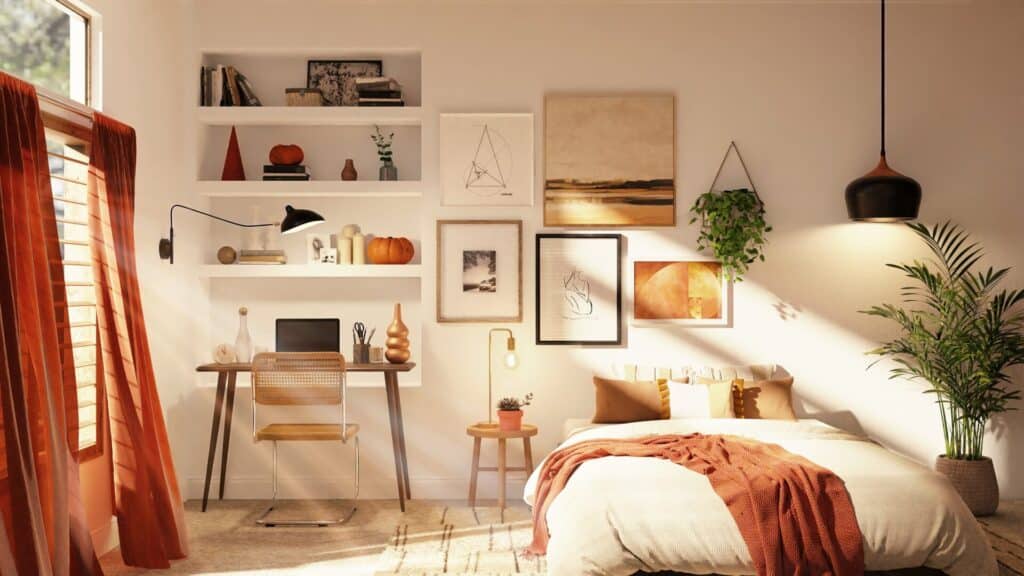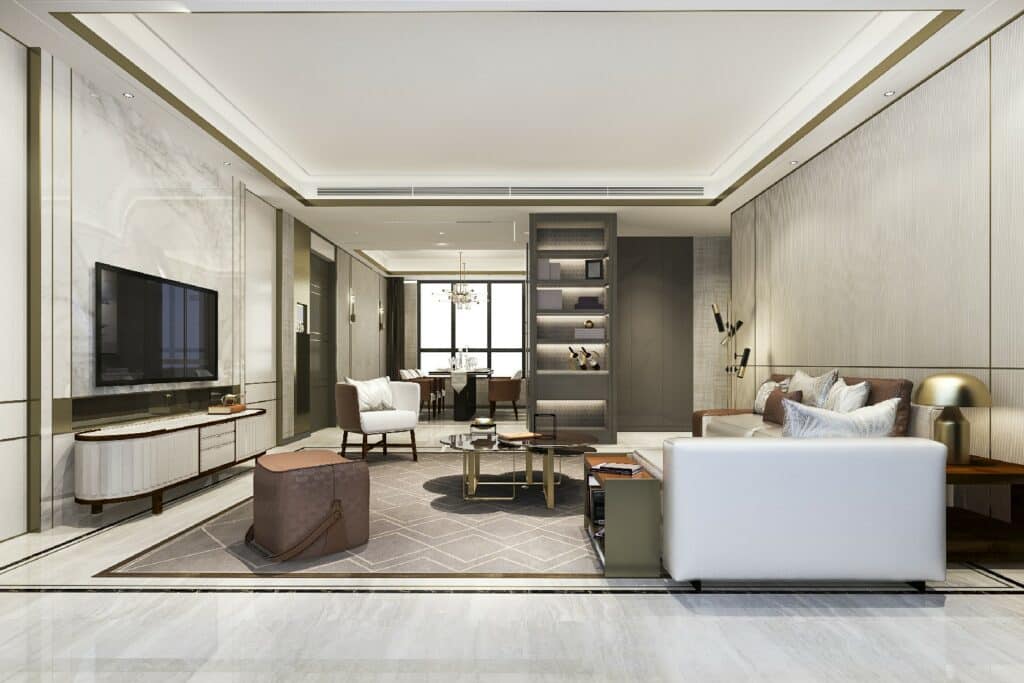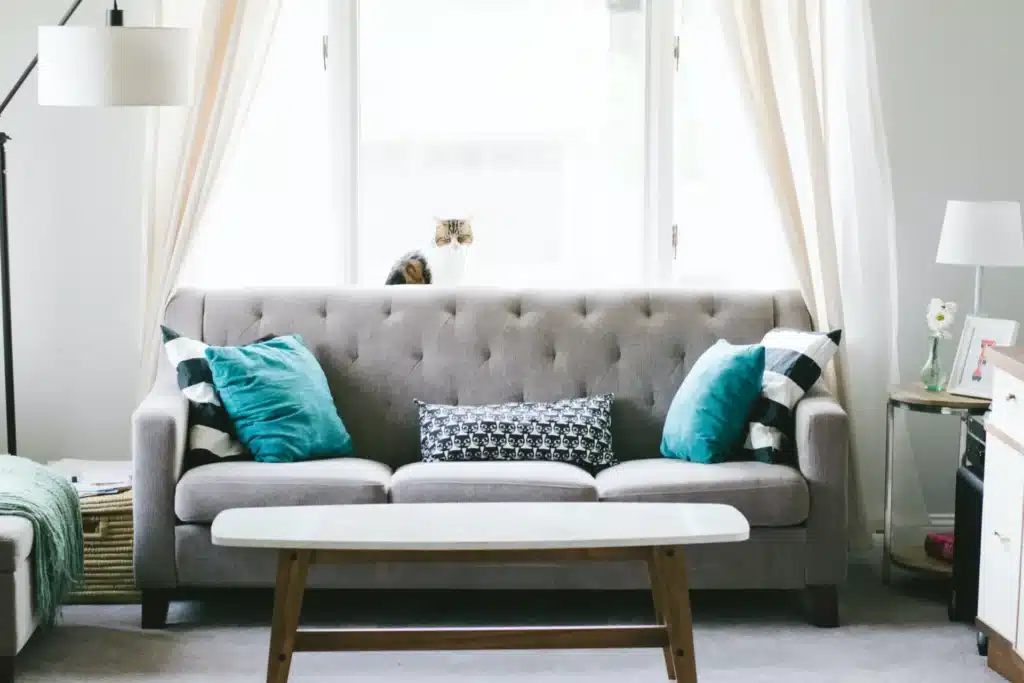The rise of mid-century modern furniture marks a significant period in design history, capturing the essence of post-World War II optimism, technological advancements, and a changing social and cultural landscape. This movement, which flourished from the 1940s to the 1960s, brought about a revolution in furniture design characterized by clean lines, organic forms, and an emphasis on functionality. Exploring the origins, key influences, notable designers, iconic furniture pieces, and lasting legacy of mid-century modern furniture sheds light on its rise and enduring popularity.
In the aftermath of World War II, there was a palpable sense of optimism and a desire to break away from the past. The war had left a significant impact on society, with a need for rebuilding and reimagining the future. This was reflected in the field of design, where a new movement emerged that sought to challenge traditional design conventions and embrace a more modern and progressive aesthetic. Technological advancements, such as the development of new materials and manufacturing techniques, played a crucial role in enabling the realization of these innovative designs.
One of the key influences on mid-century modern furniture was the Bauhaus movement, which originated in Germany in the early 20th century. The Bauhaus school emphasized the integration of art, craft, and technology, aiming to create functional and aesthetically pleasing designs accessible to the masses. The principles of simplicity, functionality, and the unity of form and function became central tenets of mid-century modern design.
Scandinavian design also played a significant role in shaping mid-century modern furniture. Designers from countries like Denmark, Sweden, and Finland embraced a minimalist approach with a focus on clean lines, natural materials, and functional design. Their aim was to create furniture that was not only visually appealing but also practical and suited to modern living.
Organic architecture and the work of renowned architect Frank Lloyd Wright also influenced mid-century modern furniture. Wright believed in harmonizing architecture with the natural environment, and this philosophy translated into furniture design as well. Organic forms and the use of natural materials were embraced to create furniture pieces that seamlessly blended with their surroundings.
The Japanese aesthetic and Zen philosophy had a profound impact on mid-century modern design. Concepts such as simplicity, serenity, and the connection between nature and the built environment resonated with designers of this era. Japanese craftsmanship and traditional woodworking techniques also inspired the use of natural materials and the creation of furniture pieces that celebrated the beauty of imperfection.
A defining characteristic of mid-century modern furniture is its clean lines and minimalist forms. Furniture pieces were stripped of excessive ornamentation and embellishments, focusing on pure geometric shapes and simplicity. This minimalist approach was a departure from the ornate and decorative styles that dominated the earlier periods, reflecting a desire for a more streamlined and functional aesthetic.
Functionality was a key consideration in mid-century modern design. Furniture was designed with the user in mind, with an emphasis on comfort, ergonomics, and practicality. The goal was to create furniture that not only looked good but also served a purpose and enhanced the daily lives of its users. Pieces were often designed to be versatile and adaptable, offering multiple functions or the ability to be easily rearranged.
The integration of indoor and outdoor spaces was another significant aspect of mid-century modern design. Large windows, open floor plans, and the use of materials such as glass and steel allowed for a seamless transition between the interior and exterior environments. Furniture pieces designed for outdoor spaces became popular, blurring the boundaries between indoor and outdoor living and embracing a more relaxed and casual lifestyle.
Innovative materials and manufacturing techniques were embraced during the mid-century modern era. Molded plywood and bentwood techniques allowed for the creation of organic and sculptural forms, while fiberglass and plastic offered lightweight and durable options. Steel and wire mesh were used for their strength and versatility, allowing for the creation of sleek and airy designs. Teak and rosewood became popular choices for their warm tones and rich grains, adding a touch of natural beauty to furniture pieces. Upholstery and textiles also played a significant role, with designers experimenting with bold patterns, vibrant colors, and innovative fabrics to enhance the overall aesthetic of the furniture.
During the mid-century modern era, several designers emerged as pioneers who shaped the movement with their iconic furniture designs. Charles and Ray Eames, known for their innovative use of materials and their commitment to accessible design, created timeless pieces such as the Eames Lounge Chair and Ottoman, which is now considered an icon of mid-century modern furniture.
George Nelson, an influential designer and visionary, introduced innovative concepts such as the “family room” and the “storage wall.” His designs, including the Nelson Marshmallow Sofa and his iconic Ball Clock and Bubble Lamp, embodied the playful and whimsical spirit of the mid-century modern movement.
Isamu Noguchi, a sculptor and designer, brought his artistic sensibility to furniture design, creating the iconic Noguchi Coffee Table. His Akari Light Sculptures, inspired by traditional Japanese paper lanterns, added an ethereal and organic touch to interior spaces.
Eero Saarinen, a Finnish-American architect and designer, made significant contributions to mid-century modern furniture with his iconic Saarinen Tulip Table and Chair. These pieces showcased his innovative use of materials and his ability to create visually striking yet functional designs.
Hans Wegner, a Danish designer, is renowned for his elegant and timeless designs. The Wishbone Chair, with its distinctive Y-shaped backrest, and the Shell Chair, with its organic and sculptural form, are among his most celebrated creations.
Arne Jacobsen, a Danish architect and designer, left a lasting impact on mid-century modern furniture with his Egg Chair and Swan Chair. These designs combined organic shapes with luxurious upholstery, epitomizing the elegance and sophistication of the era.
Florence Knoll, an American architect and designer, contributed to the mid-century modern movement with her minimalist and functional designs. The Knoll Sofa, with its clean lines and modular components, exemplified her design philosophy of creating furniture that adapts to various interior settings.
The enduring influence of mid-century modern furniture can be seen in its impact on contemporary design. The minimalist aesthetic, simplified forms, and focus on functionality continue to inspire designers and homeowners today. The principles of sustainable and eco-friendly design championed by mid-century modern furniture align with the growing interest in environmentally conscious practices in the modern era.
The market for mid-century modern furniture has experienced a significant revival in recent years. Collectors and enthusiasts seek out original pieces for their historical significance and design value. The limited production and rarity of certain designs contribute to their appeal and investment potential. It is essential for collectors to verify the authenticity of pieces and be aware of market trends to make informed purchasing decisions.
Integrating mid-century modern furniture into interior design allows for the creation of timeless and stylish spaces. The clean lines, functional designs, and iconic pieces can be combined with other design styles to create a cohesive and harmonious look. Whether in residential interiors, commercial spaces, or museum settings, mid-century modern furniture continues to make a statement and elevate the aesthetic appeal of any environment.
Beyond its aesthetic contributions, mid-century modern furniture has also made its mark on popular culture. Its influence can be seen in film and television, where sets often incorporate mid-century modern pieces to evoke a particular era or aesthetic. Museums and exhibitions around the world celebrate the significance of mid-century modern design, showcasing iconic furniture as works of art.
In conclusion, the popularity of mid-century modern furniture stems from its timeless aesthetic, historical significance, functional versatility, and lasting influence. The movement’s impact on design history is undeniable, as it represents a pivotal moment in the evolution of furniture design. The rise of mid-century modern furniture during the post-war period reflected a shift in societal values and a desire for a fresh, forward-thinking approach to design.
With its clean lines, minimalist forms, and emphasis on functionality, mid-century modern furniture continues to captivate design enthusiasts and collectors alike. The movement’s integration of indoor and outdoor spaces, innovative use of materials, and focus on organic and natural forms created a visual language that still resonates with contemporary design sensibilities.
The legacy of mid-century modern furniture extends beyond its aesthetic appeal. It has shaped the way we live, work, and interact with our surroundings. The movement’s influence on interior design has fostered open floor plans, embraced the concept of multipurpose spaces, and emphasized the importance of natural light and a connection to nature.
Mid-century modern furniture has also left an indelible mark on the world of design, inspiring subsequent generations of designers to explore new possibilities and push boundaries. Its enduring popularity can be attributed to its timeless appeal, versatility, and ability to seamlessly blend with various design styles.
Collecting mid-century modern furniture has become a passion for many, with enthusiasts appreciating the historical significance and design excellence of these iconic pieces. The market for original mid-century modern furniture has experienced a resurgence, driven by the demand for authentic and well-preserved designs. Collectors and buyers are advised to educate themselves on the characteristics, designers, and materials associated with mid-century modern furniture to make informed choices and ensure the integrity of their collections.
As we navigate the ever-changing landscape of design, the influence of mid-century modern furniture remains steadfast. Its principles of simplicity, functionality, and timeless elegance continue to shape the way we perceive and interact with the built environment. Mid-century modern furniture stands as a testament to the power of design to transcend time, capturing the spirit of an era and leaving an enduring mark on the world of furniture design.




